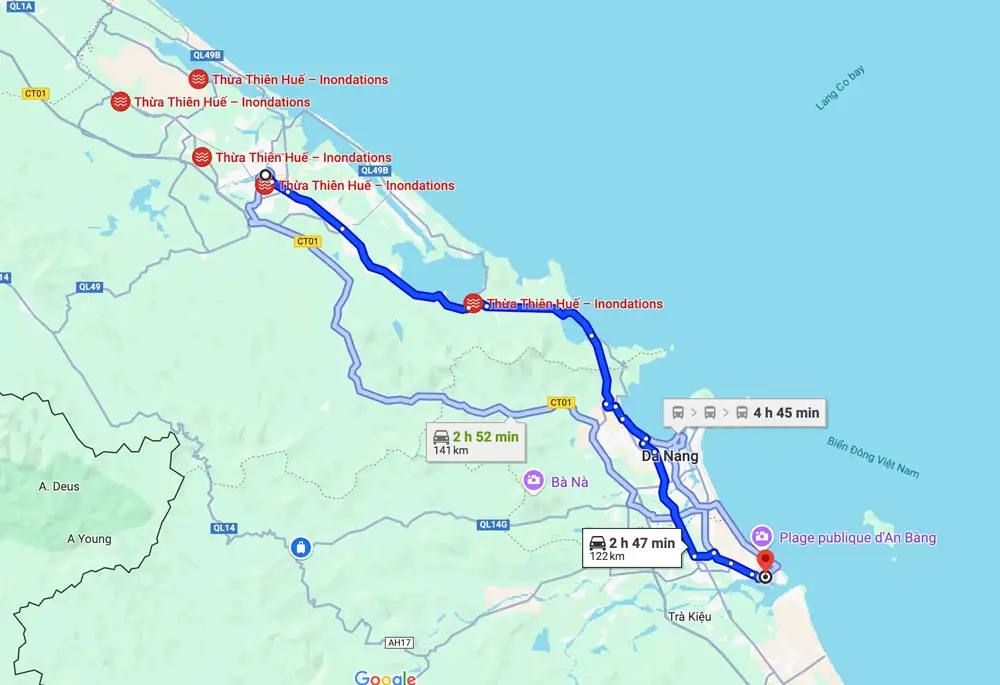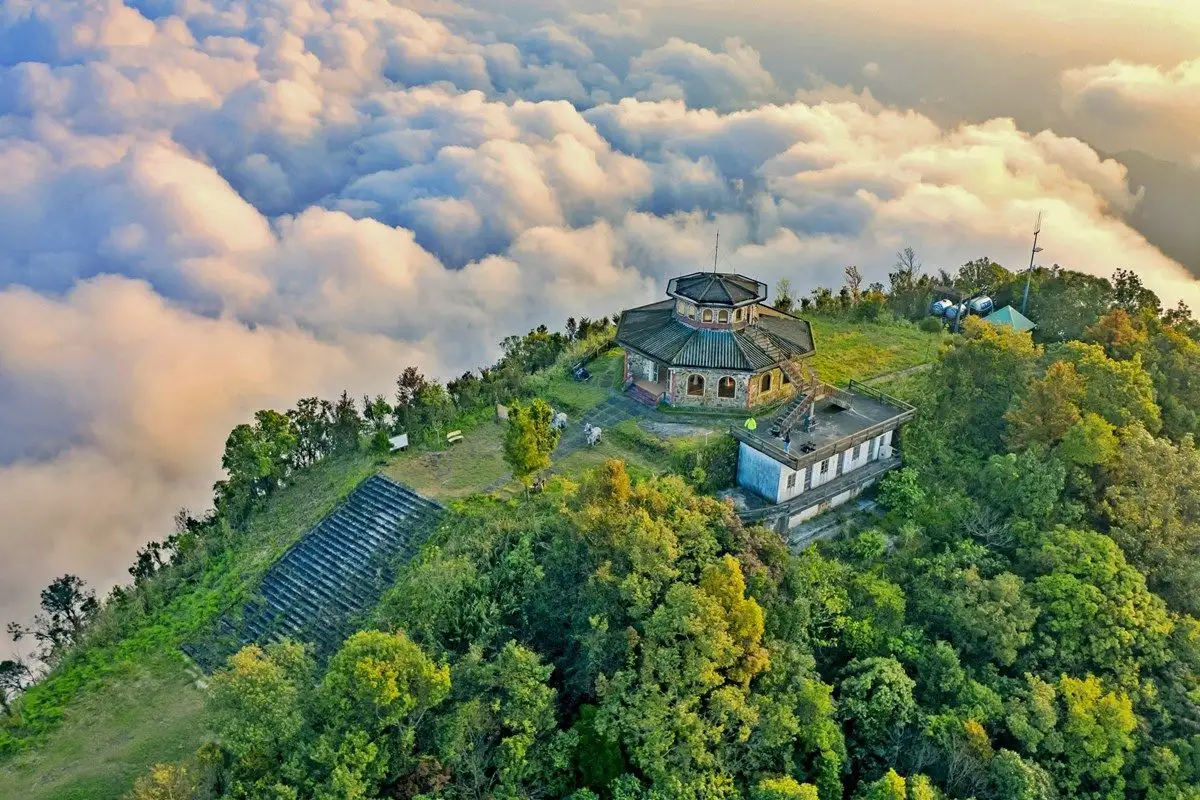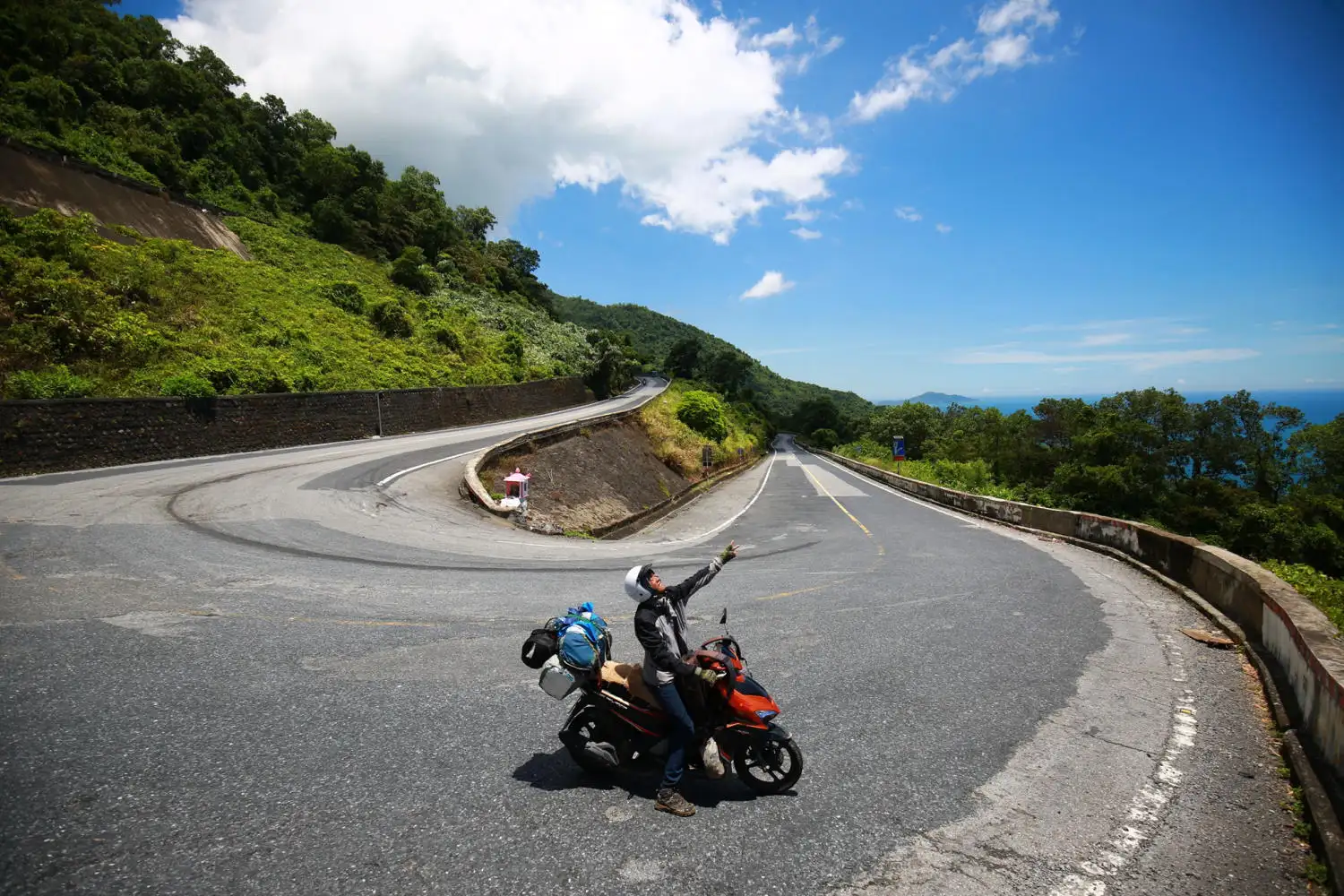Hue to Hoi An motorbike adventure: Route, best time to go & travel tips
Traveling from Hue to Hoi An motorbike is one of the most thrilling journeys you can experience in Central Vietnam. The winding Hai Van Pass, the sparkling blue coastline, and the freedom of the open road create a sense of adventure that no bus or car ride can match. This route not only takes you through some of Vietnam’s most iconic landscapes but also gives you the chance to stop at hidden gems, from quiet lagoons to ancient temples, along the way.
Overview of the journey from Hue to Hoi An motorbike
The Hue to Hoi An motorbike journey is one of the most scenic and fascinating routes in Central Vietnam. The distance ranges from 95 km to over 270 km, depending on which route you choose. On average, if you take the popular Hai Van Pass route, it will take about 3 – 5 hours to reach Hoi An, not including time for sightseeing or rest stops.

- Coastal route: Takes you along the Central Coast, passing sandy beaches, fishing villages, and open, breezy roads.
- Highway route: Follows the main national highway, convenient and time-saving, suitable for those who prioritize speed over scenery.
- Mountain pass route: Crosses the famous Hai Van Pass, renowned for its dramatic combination of mountains and sea views – ideal for adventurous riders.
- Forest and mountain route: Follows the Ho Chi Minh Road through remote landscapes, offering wild natural scenery with very few tourists, perfect for explorers.
The best time to take a motorbike Hue to Hoi An trip is from March to October, when the weather is sunny, skies are clear, and visibility on mountain passes is excellent. During the rainy season from November to February, the climate is colder with heavy mist, especially in the northern approach to Hai Van Pass, making riding more challenging and potentially dangerous.
After the long yet thrilling motorbike ride from Hue to Hoi An, nothing feels better than unwinding in comfort. You can arrive at Bliss Hoi An Beach Resort & Wellness and enjoy a refreshing Ngoc Linh spa treatment or soothing foot massage. It’s the perfect way to recharge your body and relax your mind after conquering the scenic route, ensuring your journey ends on a truly blissful note.
Hue to Hoi An motorbike trip is a journey through the landscapes, nature, and culture of Central Vietnam, an experience well worth trying at least once in your life.
Read more: Hue to Hoi An Vietnam: Complete travel guide for a smooth journey
Coastal Route – Hai Van Pass
The coastal journey from Hue to Hội An via the Hải Vân Pass is regarded as one of the most stunning routes in Central Vietnam. Starting from the center of Hue, you follow National Road QL49B toward Thuan An Beach. This is the closest beach to the city, peaceful and retaining the rustic charm of a local fishing village. From here, the road takes you along the vast Tam Giang – Cau Hai Lagoon, where the still water reflects the silhouette of the Bạch Mã mountain range in the distance. Along the way, you can stop at Cau Hai Lagoon, Lap An Lagoon, or visit famous beaches.

Leaving Lang Co, the journey becomes more dramatic as you merge onto National Highway 1A to conquer the Hai Van Pass. Stretching for about 21 kilometers, the pass winds through sharp curves and steep slopes, offering both a thrilling ride and spectacular views where mountains meet the vast ocean. At the summit, don’t miss stopping at Hải Vân Gate to take in the panoramic scenery of Lang Co Bay to the north and Đa Nang Bay to the south.
After descending the pass, the route continues along Da Nang’s coastal road, home to some of the most famous beaches in Central Vietnam. From An Bang, it’s just ten minutes to Hoi An, completing one of the most iconic Hue to Hoi An motorbike routes.
The river route – Behind Bach Ma mountain
While the coastal route is renowned for its beaches, the River Route offers a quieter adventure. This road circles behind the Bach Ma mountain range, following the Cu De River Valley. Remote and rarely traveled, it’s ideal for travelers seeking an authentic, off-the-beaten-path motorbike Hue to Hoi An experience.
Starting from Hue, you head south along Highway 1A before turning onto the road that leads toward the foothills of Bach Ma and the Cu De Valley. The scenery quickly shifts from quiet rural villages to dense green forests. One of the highlights of this route is the chance to pass behind the Bach Ma range itself.

Along the way, you will also encounter the Mui Trau Tunnel and some unfinished road sections, which add to the sense of exploration compared to the busier and more polished coastal route. This path is ideal for travelers who want to avoid the crowds on the Hai Van Pass and instead enjoy a quieter, more nature-oriented ride that feels truly “off the beaten track”.
After navigating the mountains behind Bach Ma, the road eventually reconnects with Highway 1A near Da Nang, from where you can continue along the coast and make your way down to Hoi An. Although this journey may take longer and require more effort, the reward is a unique and memorable experience, away from the typical tourist trail.
Mountain Route – Duong Ho Chi Minh (“The Mountains”)
This is a long and challenging journey, but one that truly rewards those who love exploring nature and culture. Starting from Hue, you head south to join QL49, then connect with the Ho Chi Minh Road. This road is famous for its untouched mountain scenery, light traffic, fresh air, and winding passes that test your riding skills. Along the way, you’ll pass through shaded stretches of forest, lush valleys, and sweeping mountain landscapes, giving you the feeling of being completely removed from the noise of the city.
What makes this route special is not only the natural scenery but also the cultural stops along the way. You can visit My Son Sanctuary – a UNESCO World Heritage site of ancient Cham temples hidden in the jungle – or make a detour to Ba Na Hills near Da Nang, known for the iconic Golden Bridge and its mountaintop resort.
This is the longest route from Hue to Hoi An (stretching over 270 km depending on your chosen path) and usually takes a full day of riding. In return, you’ll experience a journey that feels like traveling through the heart of the mountains – adventurous, less crowded, and ideal for those who want to discover Central Vietnam in a deeper, more unique way.
The tunnel Route – National Highway 1A (Hai Van Tunnel)
While the coastal, river, or mountain routes offer adventurous experiences, the Tunnel Route is the fastest and most convenient way to travel from Hue to Hoi An motorbike. It may not be as scenic as the other options, but it saves significant travel time while still offering a few interesting stops along the way.
Starting from downtown Hue, you head south on National Highway 1A (QL1A). This is a wide and busy highway, but relatively easy to drive compared to winding mountain passes. The highlight of this route is the Hai Van Tunnel – a modern tunnel stretching over 6 kilometers through the mountain, dramatically reducing travel time compared to crossing the Hai Van Pass. Passing through the tunnel is a completely different experience: instead of sharp, challenging curves, it takes only about 10 minutes to get through the massive mountain.

Along the way, you can make a stop at Elephant Falls near Lang Co – a refreshing and lesser-known spot that’s perfect for a short break before continuing your journey.
After exiting the tunnel, you continue along Highway 1A through Da Nang, then follow the coastal road to reach Hoi An. The total distance is just over 120 kilometers, usually taking around 3 – 4 hours depending on traffic conditions.
This route is ideal for those who prefer a quick, low-effort trip, or travelers with limited time who still want to experience the journey from Hue to Hoi An.
Scenic stops along the Hue to Hoi An motorbike route
Along the Hue to Hoi An motorbike route, you’ll have plenty of chances to stop and explore unique destinations. Each stop reveals its own charm, from stunning natural landscapes to cultural highlights and local life, making your journey truly unforgettable.
Lap An lagoon fishing village
Lap An Fishing Village lies at the meeting point of the majestic Bach Ma Mountains and the crystal-clear waters of Lang Co Bay. The tranquil atmosphere here offers visitors a sense of serenity, making it an ideal spot for taking picturesque photos with stunning natural backdrops. Travelers can also buy fresh seafood directly from local fishermen and enjoy the rich flavors of the sea right on the spot.
Elephant springs
Nestled within a lush primitive forest, Elephant Springs features crystal-clear streams flowing over natural rock formations. This destination is loved by many travelers on exploration tours, where they can swim in refreshing waters while admiring the beauty of the surrounding mountains and forests in the pure breeze.
Marble Mountains
The Marble Mountains are a renowned cluster of limestone peaks in Da Nang, home to sacred pagodas, mysterious caves, and stunning viewpoints overlooking the city. This site offers both spiritual value and natural beauty, attracting visitors with its unique cultural and scenic charm.
Thanh Toan Village
Thanh Toan Village is famous for its centuries-old wooden bridge, peaceful rural landscapes, and vast green rice fields. It is an ideal stop at the beginning or end of a journey from Hue, offering visitors an authentic experience of the rustic beauty and traditional life of the ancient capital.
Travel tips for a Hue to Hoi An motorbike trip
Hue to Hoi An motorbike trip is not just about getting from one city to another; it is a true adventure filled with breathtaking landscapes and cultural experiences. To make the most of your journey, here are some essential travel tips to keep in mind.
Renting a motorbike and one-way drop-off service
Since you cannot bring your own motorbike, renting is the most convenient option. Hue has many reliable rental shops, with motorbikes ranging from automatic scooters to manual bikes suitable for mountain roads. Prices usually range from 150,000 – 250,000 VND per day depending on the type of bike.

Many rental companies understand that travelers often ride one way. That’s why they offer a one-way rental service, allowing you to pick up the bike in Hue and drop it off in Hoi An (or Da Nang). This is a great option if you don’t plan to return to Hue, and it usually comes with a small extra fee for logistics.
Safety notes
The Hue – Hoi An route includes several winding mountain passes, especially when crossing the Hai Van Pass. Keep your speed moderate, check your mirrors frequently, and avoid reckless overtaking. If you are not experienced with mountain roads, you may consider taking the Hai Van Tunnel instead. Motorbikes are not allowed to ride directly through the tunnel, but there is a motorbike transport service that will carry your bike safely to the other side while you go by shuttle bus. This option is safer and more comfortable for less experienced riders.
Additional tips
- Make sure to check the bike’s condition (brakes, tires, lights) before renting.
- Always carry your driver’s license and, ideally, an international driving permit.
- Keep some cash handy for fuel and parking along the way.
- If you’re not confident about riding alone, some shops also offer guided motorbike tours with experienced drivers.
Read more: Hue to Hoi An by bus: Affordable travel with scenic views
The Hue to Hoi An motorbike journey is an unforgettable adventure filled with breathtaking scenery and cultural discoveries. Whether you chase the sunrise over the mountains or linger at a roadside café by the sea, this journey will leave you with lasting memories of Central Vietnam’s beauty. Pack your gear, rent a reliable bike, and get ready for one of the best rides of your life.








